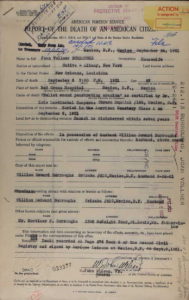Shange’s “with no immediate cause” in nappy edges is powerful and effective in ridiculing rape culture, wherein people downplay the horrible and frequent violences occurring to women.
For me, the structure of the poem in how it paces how I read it is most powerful. Accustomed to hearing grave statistics in speeches, commercials, and other daily mediums, I read,
every 3 minutes a woman is beaten
every five minutes a
woman is raped / every ten minutes
a lil girl is molested
slowly and with a great pause at the end of each statistic. Shange quickens my reading by following the statistics with a smooth narration of how she encounters these statistics daily in microagressive ways. By smooth I mean that these narrations can be read quickly and easily while still capturing fully what she is saying (which is definitely not always true with Shange’s work). Shange then repeats this sequence of reading pace by slowing down the reader through repeating the statistics and then quickening the reader’s pace through including another narration of violence against women. She repeats this process twice more with perhaps even more graphic instances of violence each time to indicate an overall speeding up in the poem. The height of her poem is reached with the following rhetorical questions,
before i ride the subway/buy a paper/drink
coffee/i must know/
have you hurt a woman today
did you beat a woman today
throw a child across a room
are the lil girl’s panties
in yr pocket
i have to ask these obscene questions
I can feel the urgency and desperation in her voice through these “obscene” questions. Especially in the context of patriarchy and rape culture where women are many times dismissed for their fears and the violences occurring to them, these questions are unsettling because they are both outrageous and familiar at the same time. Women have constantly expressed concern over these violences but are dismissed daily by the law, the media, and their community. Shange effectively draws the truth and gravity out of these violences through embedding these outrageous yet familiar concerns in the statistics and narrations.
Reading this poem reminded me of a Crunk Feminist Collective piece I read last year, titled “How Chris Brown is Effing Up My Sex Life: A B-Side to Dating While Feminist.” The author describes her internal conflict of having sexual and intimate relations with men who do not have the same intentional gender politics as she does. Specifically, she cites an instance where she found out that her partner was a Chris Brown sympathizer and therefore she had to reevaluate her standards. She grapples with the question,
Can you be a good feminist if you have intimate engagements with partners who have diametrically opposed gender politics?
This author uses the same tactic of narrating her relationship and other instances in her life where she had to confront this conflict and then climaxing with a series of outrageous yet familiar questions:
In a culture where sisters are dying in alarming numbers from domestic violence, what responsibility do I have to them and to myself to choose intimate partners whose thinking and actions are sound on these matters?
To what extent is and should my sex life be political?
I mean should I withhold sex from dudes with sexist attitudes as an act of solidarity with my sisters?
How can I get next to you if I can’t get next to your politics?
How can I let you touch me if I wouldn’t touch your politics with a ten foot pole?
Can I feel safe in the softness of your touch if you don’t feel led to question a culture where other men routinely touch other women violently?
Can we really cuddle if you have the option to not care about women and violence?
Isn’t that choice, the choice to not care about how the world affects the woman you’re spending time with, a violent one?
How can I trust you to hold me when your beliefs hold me down?
Having read “The Art of Transformation: Parallels in the Black Arts and Feminist Art Movements” by Lisa Gail Collins and therefore understanding the crucial role Shange played and continues to play in bridging the Black Power and Women’s Liberation movement for black women makes this even more relevant. The Crunk Feminist Collective author pays homage to the black women before her who also bridged these movements:
It wouldn’t be the first time that Black women withheld sex from Black men in service of larger racial interests. After the Civil War, Black men (but not Black women) could vote for a few brief years. Back then, most Black folks voted Republican as they were the more liberal party at the time and the party of Abraham Lincoln. But there were times when some Black men determined to vote Democrat so they wouldn’t be the target of white racial backlash. In addition to accompanying their men to the polls to monitor their votes, Black women banded together and encouraged each other to withhold sex from any man who voted against the community’s interests. These sisters knew how personal the political was long before white women said it. They knew that when it comes to Black women’s quality of life, there is nothing more political or personal than the person we’re sleeping with.
nappy edges was published in 1978, this article in 2011. Black women are still grappling with these internal conflicts today but we must show love to Shange for being a visionary of her time to vocalize the intersectionalities and realities of black women.


